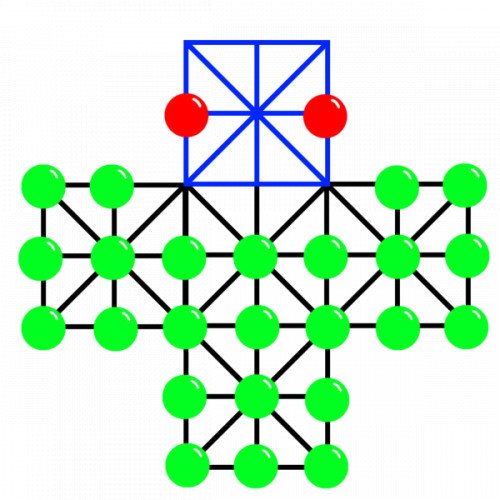ASALTO VS COMMANDS & COLORS: ANCIENTS

ASALTO
Asalto, also known as the Assault Game, German Tactics or Officers and Sepoys, is a board game for two players in which one player, playing as the officers, attempts to defend a fortress from their opponent's invading rebels. The game is a variant on the Fox and Geese theme, and is commonly played in Germany, France, and England. Asalto is an asymmetric game in which the players take on two very different roles: the rebels and the officers. The rebels' objective is to capture the two officers, surround them so that they cannot move, or occupy all of the points within the "fortress". The officers' objective is to capture enough rebels that these tasks become impossible. Asalto is played on a grid of 33 intersection points in the shape of a cross, with a specially denoted arm known as the fortress at the top of the board. The total number of pieces in an Asalto game is 26, composed of 24 rebels and two officers. Before play begins, the rebels are arranged so that they sit on the 24 intersection points outside the fortress, while the officers may be arranged at the player's discretion inside the fortress. The game begins once the rebel player takes the first turn.
Statistics for this Xoptio

COMMANDS & COLORS: ANCIENTS
Commands & Colors: Ancients is a board wargame designed by Richard Borg, Pat Kurivial, and Roy Grider, and published by GMT Games in 2006. It is based on Borg's Commands & Colors system using some elements similar to his other games such as Commands & Colours: Napoleonics, The Great War, Memoir '44 and Battle Cry designed to simulate the "fog of war" and uncertainty encountered on real battlefields. Commands & Colors: Ancients focuses on the historic period of 3000 BC - 400 AD. The core game includes several hundred wood blocks in two colors for the Roman/Syracusan armies and Carthaginian army. Sheets of stickers representing different unit types must be affixed to the blocks prior to initial play. 16 small wooden blocks representing "victory banners" and 7 larger plastic dice must also have stickers applied. Extra stickers are included for use as replacements. The game also contains a full-color rule book, color scenario book, and two color two-page double-sided "cheat sheets" for players to reference during play for dice results and unit statistics. The board is folded card stock laid flat for play. Hexagonal terrain pieces are laid on the board when called for by a scenario. A deck of command cards is included. Units are arranged on the board according to maps and scenario descriptions in the scenario book. Players are dealt a number of command cards equal to their "command value" for the chosen scenario. Often players have different command values and therefore different numbers of cards. Players take turns playing their cards to "order" units, generally allowing the ordered units to move and conduct combat. Cards often refer to a section of the battlefield, either left, center, or right, or some combination of these. There are also many special cards that allow very specific actions. Play continues until one player earns the requisite number of victory banners for the scenario. Victory banners are earned each time a player completely eliminates an enemy unit or leader.